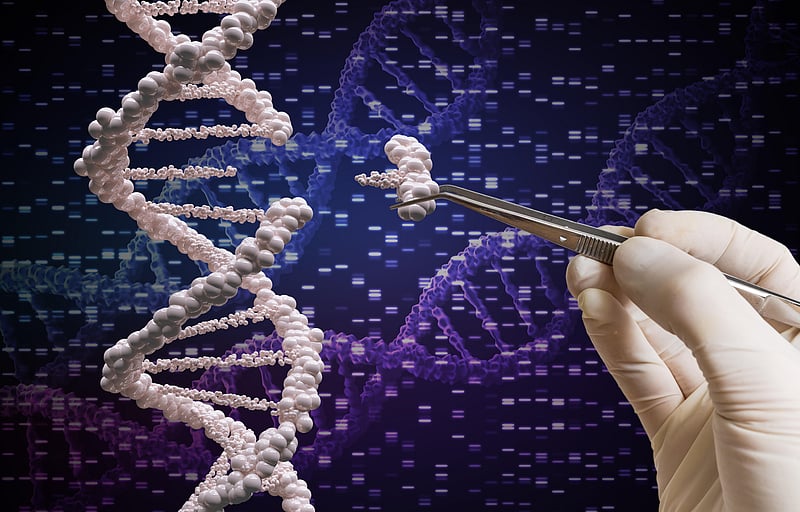Get Healthy!

- Dennis Thompson
- Posted March 29, 2022
Saving the 'Butterfly Children:' Gene Therapy Helps Heal Deadly Blistering Condition
An experimental cream-based gene therapy may soon become the first U.S. government-approved means for treating a rare and devastating skin disease that produces "butterfly children."
Patients with recessive dystrophic epidermolysis bullosa (EB) are called butterfly children "because their skin is as fragile as the wings of a butterfly," explained lead researcher Dr. Peter Marinkovich, director of Stanford Medicine's Blistering Disease Clinic.
A faulty inherited gene leaves these children unable to produce a collagen "glue" that binds the inner layer of the skin (the dermis) to the outer layer of the skin (the epidermis), Marinkovich said.
As a result, minor scrapes or jostles can cause their skin to blister and form open wounds that will not heal, leaving the patient open to severe infections, scarring and -- if they live long enough -- an increased risk of skin cancer.
"It's an incredibly devastating and brutal disease," said Michael Hund, CEO of the EB Research Partnership. Many children die in infancy, and "life expectancy at most is around 30 years old," he said.
"It's a life of bloody bandages, and every day is filled with pain," Hund said. "Everything is impacted because of the disease. Many people forget your skin is your largest organ. So when your skin doesn't function like people with healthy skin, every aspect of your life is impacted."
There are as many as 30,000 EB patients in the United States, and until now there's been no treatment for the disorder, Hund said.
But a new gene therapy produced by the Pittsburgh firm Krystal Biotech has shown in phase 2 and 3 trials that it can heal wounds that have been open for years in some butterfly children. The company has given the cream the brand name Vyjuvek.
Vyjuvek contains a modified herpes simplex virus, which delivers to skin cells an intact and healthy copy of the faulty gene causing the disorder, COL7A1.
The cream is applied directly to the skin during regular weekly bandage changes, researchers said. It's stable at room temperature and can be applied without special expertise.
The modified herpes virus can't replicate, but because of the virus' natural ability to evade the immune system, it provides the best means of delivering the intact gene, Marinkovich explained.
"You don't want the gene therapy to create an immune reaction or inflammation" in skin that's already severely damaged, Marinkovich said. "That's why we had very good results on the safety side, because the patients were able to receive the therapy multiple times without any loss of efficacy or any inflammation-related adverse events."
Early phase 2 results showed that Vyjuvek healed the open wounds of nine EB patients, according to the report published in the journal Nature Medicine.
This included a large 10-year-old wound covering most of the side of a patient's body that experienced 70% healing with the cream, the researchers reported.
All other wounds closed completely with treatment, including a chronic wound that had persisted for five years in another patient. That long-term wound closed completely after two rounds of cream treatment, and remained closed throughout eight months of monitoring.
"What we typically do is start applying cream to the most problematic wounds on a patient," Marinkovich said. "Then once those are healed, we move on to the other wounds until they are healed."
The researchers expect that the gene therapy will keep the treated wounds healed, Marinkovich said. New wounds could still form in untreated areas, and the cream would be applied to those as they occur.
"Eventually we get to the point that most wounds are healed, and patient wound burden is reduced," Marinkovich said.
A phase 3 trial for Vyjuvek also has been completed and proved successful as well, according to Krystal Biotech.
In that trial, researchers identified two matched wounds on 31 EB patients. One wound was treated with Vyjuvek, and the other with a placebo.
About 67% of wounds treated with Vyjuvek experienced complete healing within six months, compared with 22% of wounds treated with placebo, Krystal said in a company statement.
The phase 3 results were presented at the American Academy of Dermatology annual meeting last weekend, in Boston. Such research is considered preliminary until published in a peer-reviewed journal.
Krystal has said it plans to submit an application to the U.S. Food and Drug Administration for approval of Vyjuvek during the first half of 2022.
"We expect it may very well be approved next year," Marinkovich said.
EB is one of 7,000 diseases categorized as rare in the United States, Hund said, but the landscape of this particular disease has transformed in recent years.
Vyjuvek is one of four EB treatments now in phase 3 clinical trials, and three of those four are gene therapies, Hund said.
"There is an incredible amount of optimism and hope, yet a lot of work still to be done because there's still not an approved treatment," Hund said.
More information
The U.S. National Institutes of Health has more about epidermolysis bullosa.
SOURCES: M. Peter Marinkovich, MD, director, Blistering Disease Clinic, Department of Dermatology, Stanford University School of Medicine, Stanford, Calif.; Michael Hund, MBA, CEO, EB Research Partnership; Krystal Biotech, news release, March 26, 2022; Nature Medicine, March 28, 2022




